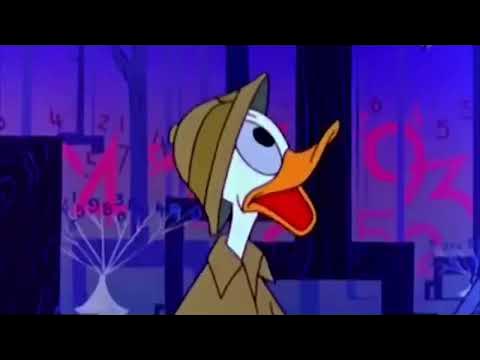BBC Documentary The Math Mystery Mathematics in Nature and Universe Science Documentary
Summary
TLDRThis video explores the intricate relationship between mathematics and the natural world, highlighting its essential role in understanding the universe. It discusses how patterns observed in nature, from celestial constellations to biological forms, connect deeply with mathematical principles. Albert Einstein's musings on the efficacy of mathematics in explaining reality prompt reflections on its origins—whether it's a human invention or a universal truth. Ultimately, mathematics emerges as a powerful tool for scientists seeking to decode the complex patterns that govern everything from the nautilus shell to galaxies.
Takeaways
- 🔍 Mathematics is often referred to as the 'language of the universe,' highlighting its fundamental role in understanding nature.
- 🌌 The ability of mathematics to describe the universe raises questions about its origins and whether it is a human invention.
- 🤔 Albert Einstein pondered the effectiveness of mathematics in explaining physical phenomena, questioning its human-centric nature.
- 🐾 Animals exhibit impressive numerical abilities, suggesting that mathematical understanding may not be exclusive to humans.
- 🌍 Patterns in nature, such as constellations and seasonal changes, have historically guided human understanding and belief systems.
- 🔄 The cyclical patterns of day and night, as well as seasonal transitions, are integral to our perception of time.
- 📐 Symmetry and patterns are evident in both nature and human creations, from art to architecture.
- 🌊 The similarity of mathematical patterns in different natural forms, like shells and galaxies, invites exploration of their significance.
- 🧩 Scientists utilize mathematics as a powerful tool for deciphering the complex patterns of our world.
- ✨ The quest to understand the relationship between mathematics and the cosmos continues to be a profound scientific mystery.
Q & A
What is described as the 'language of the universe'?
-Mathematics is described as the 'language of the universe' due to its fundamental role in explaining and understanding various phenomena in nature and science.
Why does the script mention Albert Einstein's perspective on mathematics?
-Einstein wondered how mathematics could so effectively explain the universe, raising questions about its nature and whether it is a human invention or something more universal.
How have humans historically interacted with patterns in nature?
-Humans have always sought to recognize patterns in nature, such as constellations in the stars and seasonal cycles, which have influenced cultural beliefs and scientific understanding.
What examples of patterns in nature are discussed in the transcript?
-Examples include constellations, the cyclical nature of time, and symmetrical patterns found in living organisms, such as the human body and animal markings.
What is the significance of the spiral shape mentioned in the transcript?
-The spiral shape of a nautilus shell, galaxies, and even a sliced cabbage demonstrates the presence of similar mathematical patterns across vastly different contexts, suggesting a deeper connection in nature.
What role does mathematics play in scientific inquiry according to the transcript?
-Mathematics serves as a powerful tool for scientists to decode and understand the patterns of our world, indicating that the physical universe may be governed entirely by mathematical properties.
How does the concept of time relate to patterns observed by humans?
-Humans observe time as a pattern of recurring cycles, marked by the transition from day to night and the changing seasons, which reflects a structured order in nature.
What philosophical questions does the relationship between mathematics and the universe raise?
-The relationship prompts questions about the origins of mathematical concepts, their universality, and whether they exist independently of human thought.
In what ways do the patterns found in the natural world inspire human creativity?
-Patterns in nature, such as symmetry and geometric shapes, influence art, architecture, and various forms of human expression, bridging the gap between science and creativity.
What overarching theme does the transcript suggest about the universe and mathematics?
-The overarching theme suggests that mathematics is not only a descriptive tool but also an intrinsic part of the universe's structure, reflecting the deep connections between abstract concepts and the physical world.
Outlines

Dieser Bereich ist nur für Premium-Benutzer verfügbar. Bitte führen Sie ein Upgrade durch, um auf diesen Abschnitt zuzugreifen.
Upgrade durchführenMindmap

Dieser Bereich ist nur für Premium-Benutzer verfügbar. Bitte führen Sie ein Upgrade durch, um auf diesen Abschnitt zuzugreifen.
Upgrade durchführenKeywords

Dieser Bereich ist nur für Premium-Benutzer verfügbar. Bitte führen Sie ein Upgrade durch, um auf diesen Abschnitt zuzugreifen.
Upgrade durchführenHighlights

Dieser Bereich ist nur für Premium-Benutzer verfügbar. Bitte führen Sie ein Upgrade durch, um auf diesen Abschnitt zuzugreifen.
Upgrade durchführenTranscripts

Dieser Bereich ist nur für Premium-Benutzer verfügbar. Bitte führen Sie ein Upgrade durch, um auf diesen Abschnitt zuzugreifen.
Upgrade durchführenWeitere ähnliche Videos ansehen

Nature's Numbers By: Ian Stewart (Chapter 2: WHAT MATHEMATICS IS FOR?)

Painted with numbers: mathematical patterns in nature

APAKAH TUHAN AHLI MATEMATIKA??

Donald no País da Matemágica e O Número de Ouro - [Dublado]

Math is Everywhere | Mathematics in the Modern World

Math in the Modern World Module 1 - Nature of Mathematics
5.0 / 5 (0 votes)
